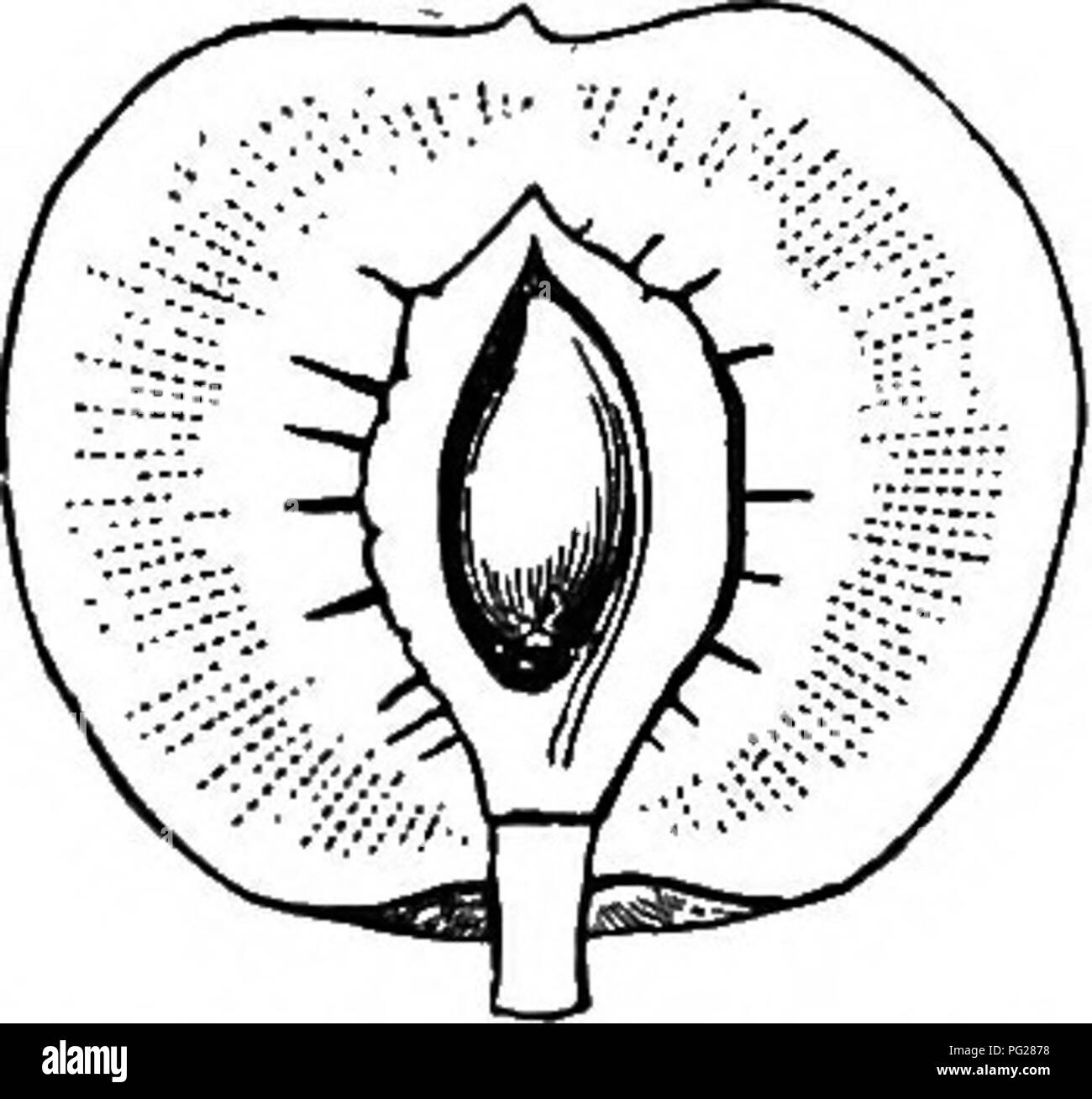. A text-book of botany for secondary schools. Botany. ANGIOSPERMS 239 called the Leguminosm, a legume being a special kind of pod (Fig. 229). When a pod is derived from a compound pistil, forming a fruit of several cham- bers, it is more commonly called a cap- sule; and capsules differ from one an- other in the way the chambers are opened (Fig. 230). b. Indehiscent fruits.—The most com- mon form of dry fruits that do not open is that in which the modified ovary wall invests the solitary seed so closely that the fruit looks like a seed, and is com- monly called a seed. The grain of cere- als i

Image details
Contributor:
Central Historic Books / Alamy Stock PhotoImage ID:
PG2878File size:
7.1 MB (221.6 KB Compressed download)Releases:
Model - no | Property - noDo I need a release?Dimensions:
1633 x 1530 px | 27.7 x 25.9 cm | 10.9 x 10.2 inches | 150dpiMore information:
This image is a public domain image, which means either that copyright has expired in the image or the copyright holder has waived their copyright. Alamy charges you a fee for access to the high resolution copy of the image.
This image could have imperfections as it’s either historical or reportage.
. A text-book of botany for secondary schools. Botany. ANGIOSPERMS 239 called the Leguminosm, a legume being a special kind of pod (Fig. 229). When a pod is derived from a compound pistil, forming a fruit of several cham- bers, it is more commonly called a cap- sule; and capsules differ from one an- other in the way the chambers are opened (Fig. 230). b. Indehiscent fruits.—The most com- mon form of dry fruits that do not open is that in which the modified ovary wall invests the solitary seed so closely that the fruit looks like a seed, and is com- monly called a seed. The grain of cere- als is such a seed-like fruit, as is also the akene of sun-flowers, dandelions, etc. (Fig. 231). (2) Fleshy fruits.—In some cases the whole ovary becomes a thin-skinned pulpy mass in which the seeds are em- bedded, as the grape, currant, gooseberry, tomato, etc., such a fruit being a berry. Modifications of the berry are seen in such fruits as the orange and the lemon, in which the skin is leathery; and in such fruits as melons and pumpkins, which be- come covered with a hard rind. Very distinct from these are the stone-fruits (drupes), as peach, plum, cherry, etc., in which the ovary wall ripens in two layers, the inner one being very hard, forming the "stone, " and the outer one being pulpy (Fig. 232). In general, fleshy fruits do not open; but the banana is a peculiar fleshy fruit that de- hisces. Fig. 231.—Akene of daodelion, which ta- pers above into a long beak bearing a tuft of hairs.—After Gray.. Fig. 232.—Section of peach, showing pulp and stone formed from ovary wall and enclosing the seed (kernel).—After Gray.. Please note that these images are extracted from scanned page images that may have been digitally enhanced for readability - coloration and appearance of these illustrations may not perfectly resemble the original work.. Coulter, John Merle, 1851-1928. New York, D. Appleton